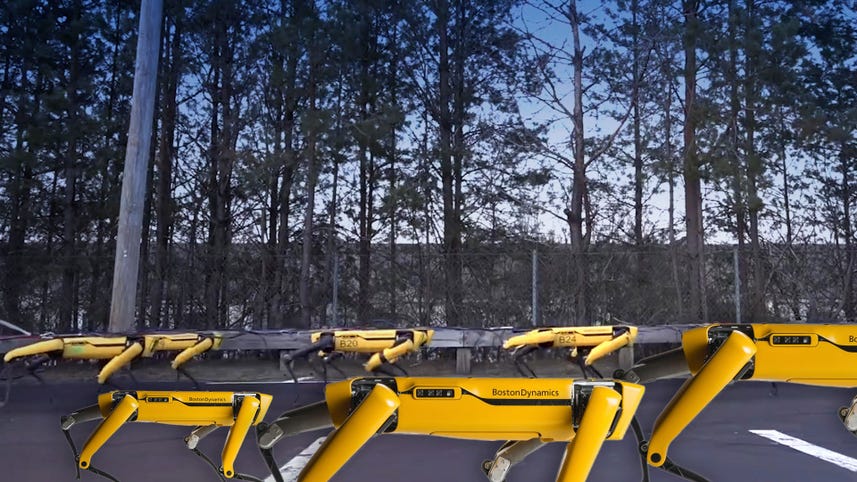
[MUSIC]
Welcome to What the Future.
On today's show, new video of the Spot robot from Boston Dynamics proves that there's strength in numbers.
Modular robots could someday help build a habitat for astronauts on the Red Planet.
And researchers have created these first 3D printed hearts made from human tissue let's get into it.
Boston dynamics says it's spot many robots are coming off the production line and they can't wait to get to work it took just 10 of these dog like robots to pull a truck.
In neutral, of a one-degree incline.
Boston Dynamics has shown the Spot robots learning to do all sorts of tricky maneuvers.
Falling down, getting up, getting down, going up, doing the dishes, and even shaking its backside.
Boston Dynamics says this funky four-legged robots should be available for purchase in the near future.
Turning a harsh Martian landscape into a place astronauts can call home won't be easy, that's why NASA hosted a competition to find ideas from outside the aerospace industry.
This concept from architecture firm Hustle is one of NASA's finalist It starts with the delivery of modular robots, long before any humans arrived.These autonomous interchangeable robots can perform different tasks in different configurations.
The work starts with the one wheel scout rover which scans the martian surface looking for regular, when it is found a suitable spot the digger robot comes in to do its work.
Gathering the loose dust and broken rocks.
It then delivers them to a melting robot which uses microwaves to liquefy the regular.
The melted Martian dust is then 3d printed into a shell, which shields the eventual human habitat for Martian storms.
Once the shell is built, the astronauts arrive with prebuilt habitation units which are transported by the modular robots in a mobile platform configuration.
Once in position, the prebuilt habitation units self inflate and are arranged in a circle.
Each connector module helps deliver power, water, data and oxygen to the habitation Units.
And the entire habitat is powered remotely by two nuclear killer power reactors and the solar farm.
The habitation pods are larger, customizable, and could serve many different functions for the astronauts who would call this Martian base home.
Possible spaces include a high tech research lab, a greenhouse A workshop and a bedroom complete with VR platform.
[MUSIC]
Researchers at Tel Aviv University successfully 3D printed a heart using human tissue for the first time.
The heart is more a rabbit size than human size, but still a breakthrough as it marks the first time in entire heart has been printed with living cells Blood vessels, ventricles and chambers intact.
The heart can contract, but it can't yet pump out blood.
Researches say the next step would be to test 3D printed hearts in animal models.
The team says that fully functional organ printing technology is likely at least Ten years away.
Thanks for watching what the future, I'm your host [UNKNOWN] See you next time.
[MUSIC].